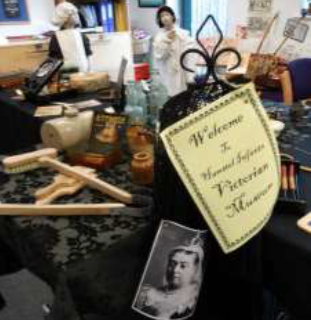Year 2 visit the Hamstel Victorian museum
- Carly Hay

- Dec 13, 2018
- 2 min read
Over the past couple of weeks, Year 2 have thoroughly enjoyed spending some time in the ‘Hamstel Victorian Museum’, kindly put together by Mrs Clark. Each class had an opportunity to visit the museum and look at a wide variety of artefacts that belong to Mrs Clark’s ancestors. All the Year 2 children found it very interesting and some artefacts puzzled us as to what they could be when we first started to explore. So it was a great opportunity to ask lots of questions and put our ‘thinking hats’ on and ponder over what some of the unusual objects were used for during the Victorian times.
We discovered the object in the photo to the right is used to put into a top hat to help put it back into shape if it gets wet in the rain. The children enjoyed looking through the photograph viewer to look at different old photos. There were lots of old booksone had pressed flowers in it. The oldest book we saw was 141 years old! In the photograph to the right, you can see a British flag that came home from World War 1. We also looked at lots of broken Victorian crockery and glass bottles. We discovered that some of the glass bottles had glass marble in them. This is because they were re-used by Sailor men and they used to hang them upside down on their ships, the marble stopped the beer from coming out.
These old shoes would have been worn by a Victorian child. They are made of leather but the sole was made of wood. The shoes would have had new soles and heels put on them and then passed down to the next child in the family. The shoes were shod like horse shoes.
Mrs Clark told us all about her family who lived in the Victorian times. She spoke about the photos of her Great Grandparents and told us that the photos were printed on photo plates which were made of metal.
The children also looked at a variety of artefacts including a hot water bottle made of stone, coins including a penny and a farthing, (made into a penny farthing bicycle, china cups and saucers, a jewellery box, some old toys such as marbles, a spinning top and an abacus. There were glove stretchers made of ebony wood and ivory too (we thought they were chopsticks! Thank you Mrs Clark for sharing all the Victorian artefacts.














Comments